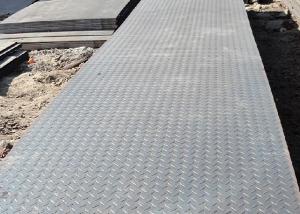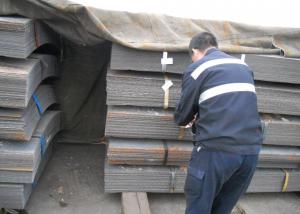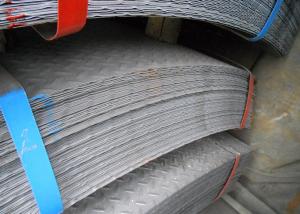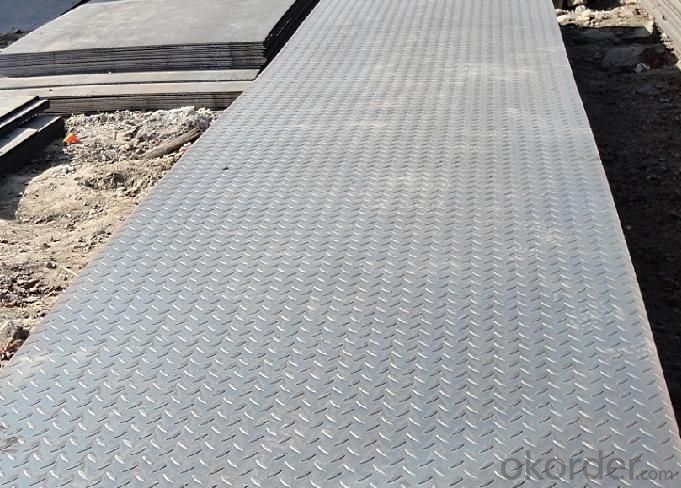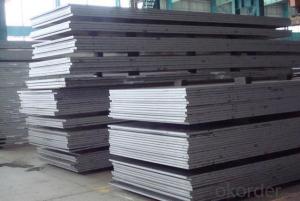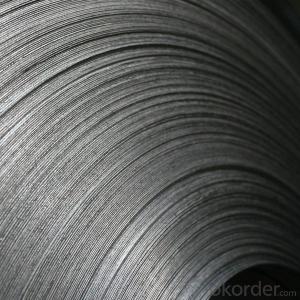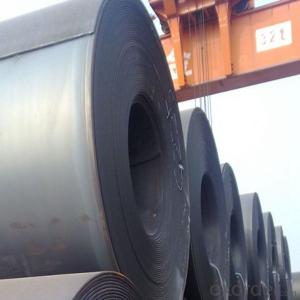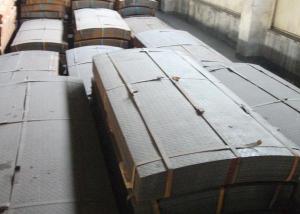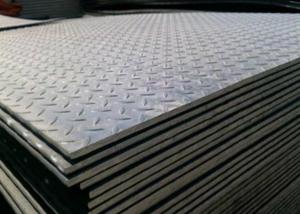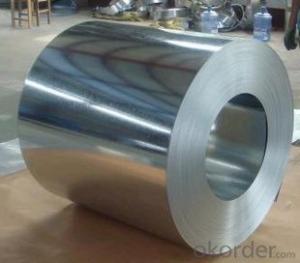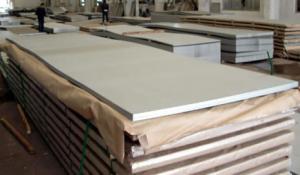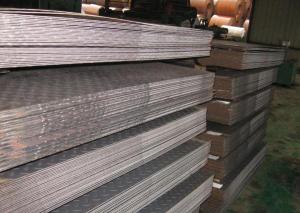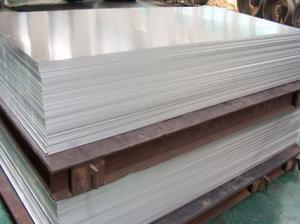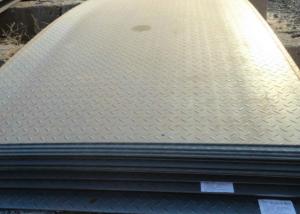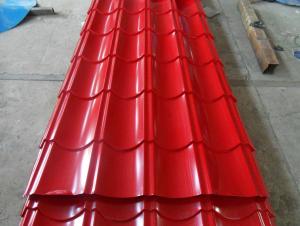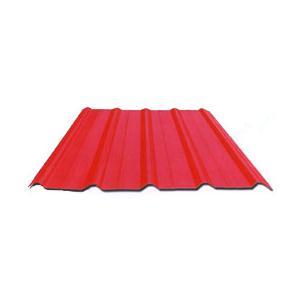Hot Rolled Checkered Steel Sheet
- Loading Port:
- Xingang Port
- Payment Terms:
- TT or LC
- Min Order Qty:
- 25MT m.t.
- Supply Capability:
- 10000MT m.t./month
OKorder Service Pledge
OKorder Financial Service
You Might Also Like
Specification of Hot Rolled Checkered Steel Sheet:
1.Advantages of our Hot Rolled Checkered Steel Sheet:
a) The unfairness of our checkered steel sheet must be less than 10mm each meter
b) The surface of our hot rolled checkered steel sheet is free from bubble, scab, crack, fold, edge delamination and so on.
c) The height of our hot rolled checkered steel sheet will be maintained between 0.2~0.3 times to thickness of steel substrate, but more than 0.5mm at least.
2. Other details of Hot Rolled Checkered Steel Sheet
Standard | GB T 3277, DIN 5922 |
Grade | Q235, S235JR |
Thickness | 2.5-8.0mm |
Width | 1000-1600mm |
Length | 4000-8000mm |
Note: Dimension of our hot rolled checkered steel sheet can be made according to your requirements, we can futher discuss it.
3. The regular sections we provide are shown in the below table:
Base Thickness(MM) | Allowed Tolerance of Base Thickness(%) | Theoretical Mass (KG/M²) | ||
The Pattern | ||||
Rhombus | Beam | Pea | ||
2.5 | ±0.3 | 21.6 | 21.3 | 21.1 |
3.0 | ±0.3 | 25.6 | 24.4 | 24.3 |
3.5 | ±0.3 | 29.5 | 28.4 | 28.3 |
4.0 | ±0.4 | 33.4 | 32.4 | 32.3 |
4.5 | ±0.4 | 37.3 | 36.4 | 36.2 |
5.0 | 0.4~-0.5 | 42.3 | 40.5 | 40.2 |
5.5 | 0.4~-0.5 | 46.2 | 44.3 | 44.1 |
6.0 | 0.5~-0.6 | 50.1 | 48.4 | 48.1 |
7.0 | 0.6~-0.7 | 59.0 | 52.5 | 52.4 |
8.0 | 0.7~-0.8 | 66.8 | 56.4 | 56.2 |
4. Chemical Composition of Hot Rolled Checkered Steel Shee
Our hot rolled checkered steel sheet is usually to roll with ordinary carlbon structure steel. The carbon content value can reach more than 0.06%,0.09% or 0.10%,the maximum value is 0.22%. The silicon content value ranges from 0.12-0.30%, the manganese content value ranges from 0.25-0.65%, and the phosphorus and sulphur content value is commonly less than 0.045%.
Applications of Hot Rolled Checkered Steel Sheet:
1.Definition: The hot rolled steel sheet with raised pattern on surface. The raised pattern could be shaped as rhombus,bean or pea. There is not only one kind of pattern on the checkered steel sheet, but also a complex of two or more than two kinds of pattern on surface of one checkered steel sheet. It also could be called as grid steel sheet.
2.Character: The Hot Rolled Checkered Steel Sheet possesses a variet of advantages, such as beauty in appearance,skip resistance and saving steel material.Generally speaking,in order to test the mechanical property or the quality of hot rolled checkered steel sheet, the shaping rate and the pattern height should be tested primarily.
3. In conclusion, the hot rolled checkered steel sheet can usually be used in the industry of ship-building,boiler,automobil,tractor,train- building and architecture. In details, there are many demands for hot rolled checkered steel sheet to make floor,ladder at workshop,work frame pedal,ship deck,car floor and so on.
Package & Delivery of Hot Rolled Checkered Steel Plate:
1. The items to be prepared for packing include: narrow steel strip, crude steel belt or edge angle steel, kraft paper or galvanized sheet.
2. The hot rolled checkered steel plate should be wrapped with kraft paper or galvanized sheet ouside, and it should be bundled with narrow steel strip, three or two narrow steel strip in longitudinal direction,and the other three or two strips in transverse direction. Furthermore, in order to fix the hot rolled checkered steel sheet and avoid the strip at edge shall be broken, the crude steel belt cut into square should be put under the narrow steel strip on the edge. Of course, the hot rolled checkered steel sheet could be bundled without kraft paper or galvanized sheet. It depends on customer’s requirement.
3. In consideration of the transportaion from mill to loading port, the truck will be usually used. And the maximum quantity for each truck is 40mt.
4. All in all, we could do in accordance with customer's request.
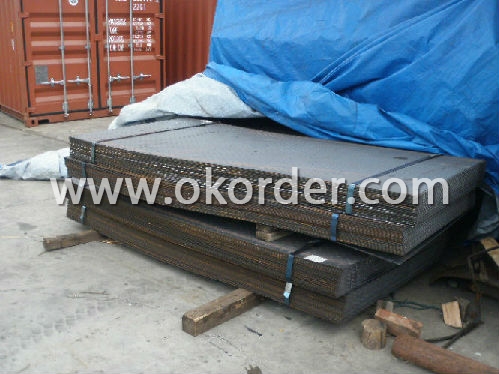
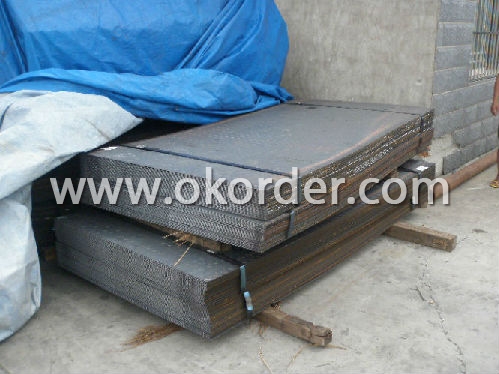
- Q: What is the thickness of the paint board?
- Paint plate generally in accordance with the "block" as the unit sales, not only as a wall decoration, doors, tables and chairs can do the shelves, cabinets bearing surface, the thickness of 1-2 cm in length, 50 - 120, 30 cm wide case is 55*30*1.5cm
- Q: Can steel sheets be used in corrosive chemical environments?
- In corrosive chemical environments, the use of steel sheets is possible, but it is crucial to consider the specific type of steel and its resistance to corrosion. Stainless steel, for instance, is widely employed in such environments due to its excellent corrosion resistance properties. It contains a minimum of 10.5% chromium, which creates a protective oxide layer on the steel's surface, preventing further corrosion. Consequently, stainless steel sheets are suitable for a diverse range of corrosive chemical environments, including those involving acids, alkalis, and salts. However, it is vital to select the appropriate grade of stainless steel that matches the specific corrosive chemicals present in the environment. Furthermore, applying protective coatings or surface treatments can further enhance the corrosion resistance of steel sheets in harsh chemical environments. Seeking advice from corrosion experts or engineers is essential in determining the most suitable steel grade and protective measures for a particular corrosive chemical environment.
- Q: What are the reasons for the steel mesh on both sides of the back pouring belt?
- In order to prevent the concrete from changing the temperature, the post pouring construction belt is called the temperature post casting belt.
- Q: What is the difference between hot rolled steel and controlled rolled steel plate? Can two plates be used interchangeably?
- The rolled steel plate is used to achieve the ideal special performance by controlling the amount of deformation, deformation and temperature. Having higher added value and higher price. Interchangeable, but not a good choice!
- Q: Are steel sheets suitable for HVAC ductwork?
- Yes, steel sheets are suitable for HVAC ductwork. Steel is a durable and strong material that can withstand the air pressure and temperature fluctuations in HVAC systems. It also provides excellent fire resistance and can be easily fabricated to meet specific ductwork requirements.
- Q: Do steel sheets require any special maintenance?
- Yes, steel sheets require some special maintenance to ensure their longevity and performance. Regular inspection and cleaning are necessary to prevent the build-up of dirt, debris, and corrosion. Additionally, applying protective coatings or paint can help to protect the steel from rust and other damages. Proper storage and handling, such as avoiding exposure to moisture and extreme temperatures, are also important to maintain the quality of steel sheets.
- Q: What are the common thicknesses for galvanized steel sheets?
- The common thicknesses for galvanized steel sheets range from 0.4mm to 3mm, with the most commonly used thicknesses being 0.8mm, 1mm, and 1.2mm.
- Q: What are the different methods of protecting steel sheets from graffiti?
- There are several methods of protecting steel sheets from graffiti, including anti-graffiti coatings, sacrificial coatings, and physical barriers. Anti-graffiti coatings are specially formulated to provide a protective layer over the steel surface, making it easier to remove graffiti without damaging the underlying material. Sacrificial coatings involve applying a removable layer of protective coating that can be easily replaced once graffiti occurs. Physical barriers, such as fences or screens, can also be installed to prevent direct access to the steel sheets, making it harder for graffiti to be applied in the first place.
- Q: Can steel sheets be used for shipbuilding?
- Yes, steel sheets can definitely be used for shipbuilding. In fact, steel is one of the most commonly used materials in shipbuilding due to its excellent strength, durability, and resistance to corrosion. Steel sheets are typically used to construct the hull, decks, and other structural components of a ship. The high tensile strength of steel allows ships to withstand the harsh conditions of the ocean, including heavy waves and extreme weather. Additionally, steel sheets can be easily fabricated and welded together, making them ideal for constructing large and complex ship structures. Overall, steel sheets are a reliable and efficient choice for shipbuilding.
- Q: What are the different thickness options for steel sheets?
- The thickness options for steel sheets can vary depending on the specific type and application, but common options range from very thin sheets around 0.4 mm (0.0157 inches) to thick sheets up to 25 mm (0.9843 inches) or even thicker for certain industrial uses.
1. Manufacturer Overview
| Location | Qianan, China |
| Year Established | 2005 |
| Annual Output Value | Above US$ 1,300 Million |
| Main Markets | Mid East; Eastern Europe; North America |
| Company Certifications |
2. Manufacturer Certificates
| a) Certification Name | |
| Range | |
| Reference | |
| Validity Period |
3. Manufacturer Capability
| a) Trade Capacity | |
| Nearest Port | Tianjin |
| Export Percentage | 40% - 60% |
| No.of Employees in Trade Department | 21-50 People |
| Language Spoken: | English; Chinese |
| b) Factory Information | |
| Factory Size: | Above 800,000 square meters |
| No. of Production Lines | Above 10 |
| Contract Manufacturing | OEM Service Offered; |
| Product Price Range | High; Average |
Send your message to us
Hot Rolled Checkered Steel Sheet
- Loading Port:
- Xingang Port
- Payment Terms:
- TT or LC
- Min Order Qty:
- 25MT m.t.
- Supply Capability:
- 10000MT m.t./month
OKorder Service Pledge
OKorder Financial Service
Similar products
Hot products
Hot Searches
Related keywords
